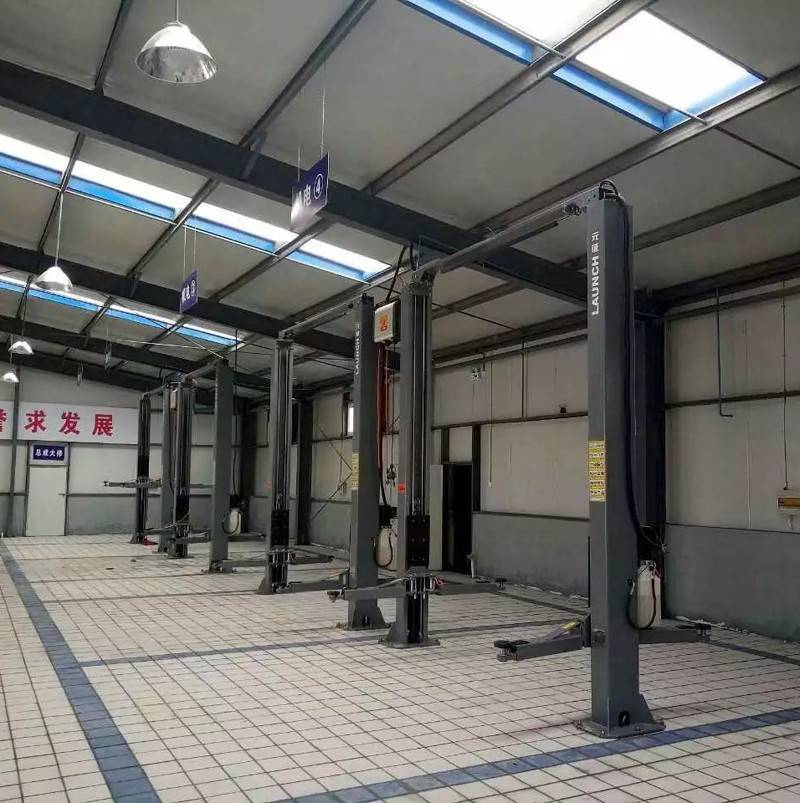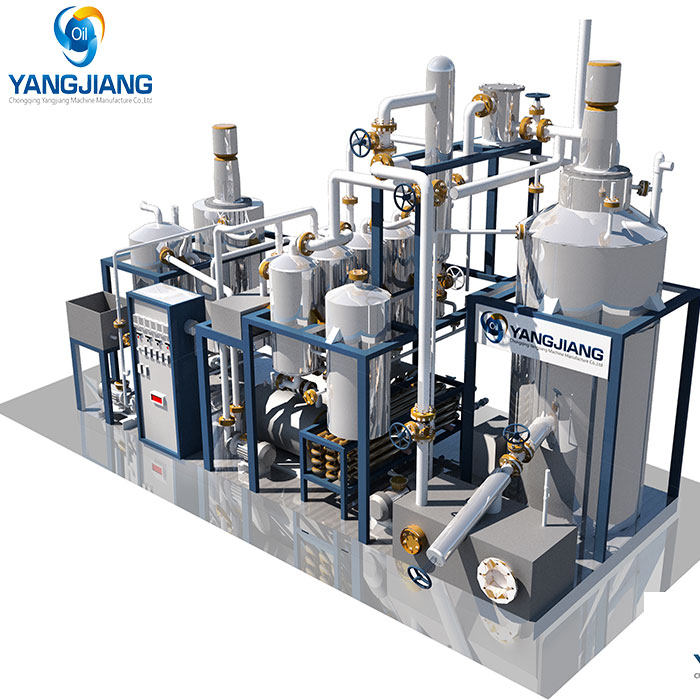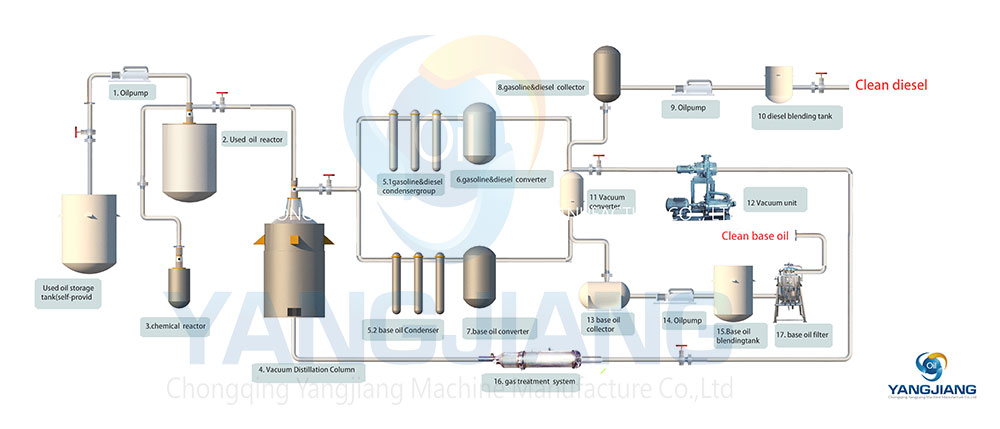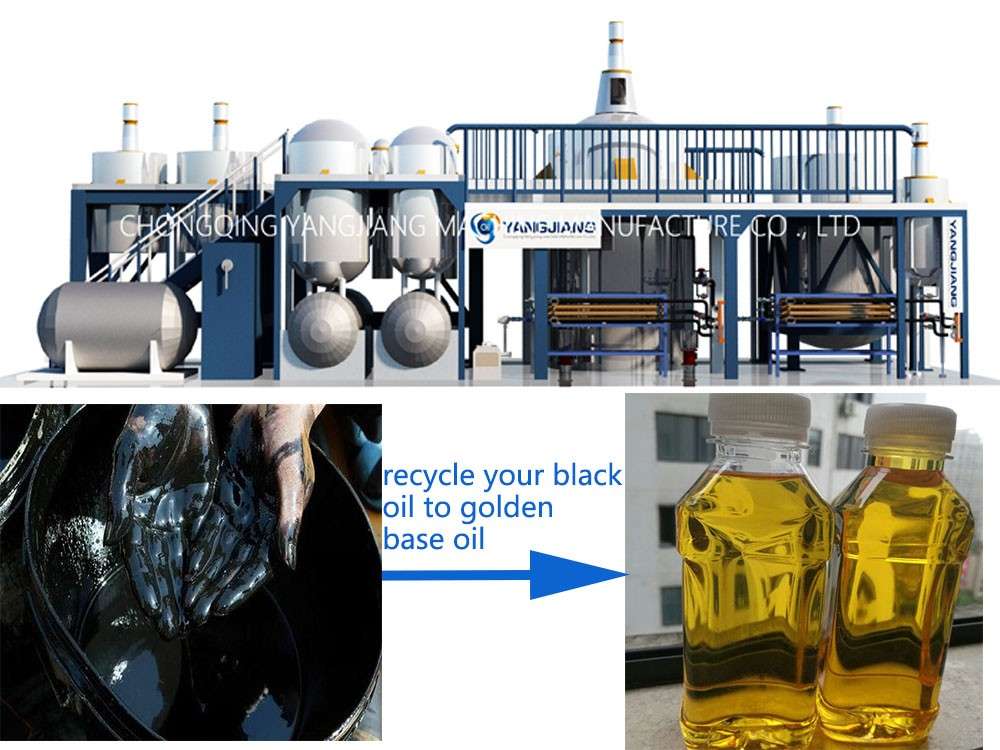The following is some necessary information about the engine oil recycling plant and the recycling process of the machine.
1. What is waste engine oil?
If we want to change the waste engine to clean oil, we first need to know what engine oil is. The Wikipedia definition of engine oil is that engine oil is the same as motor oil and lubricating oil. We all know that the car or large machinery needs engine oil to run. When we are using the engine oil, the clean engine oil may mix with air, moisture, metal scrap, or other impurities, and then the pure engine oil will get dirty. To maintain the best performance of the car or machinery, the user needs to replace the used engine oil.
According to the statistical data of forecast of demand and analysis report of strategic investment planning of China’s Automobile Manufacturing Industry Released by the Prospective Industry Research Institute, the global automobile market sales volume in 2012 has reached 82.1664 million, showing a trend of annual growth. In 2016, the sales volume of the worldwide automobile market exceeded 90 million, and by 2017, the sales volume of the global automobile market increased to 96.8044 million, up 3.14% year on year. Affected by the global economic situation, the global automobile market is in cold weather, ending the seven-year rising trend. In 2018, the global automobile market sales reached 95.6 million, down 1.24% year-on-year. In the first half of 2018, the global market performed relatively well and maintained a certain growth momentum. Car ownership is increasing year by year, which means the demand for engine oil is also increasing year by year. The more car users use motor oil, the more waste motor oil is produced.
2. Where does waste engine oil come from?
Waste engine oil comes from an array of different sources, including do-it-yourselfers, auto shops, manufacturing companies, electric generating stations, HVAC companies, and mining/smelter companies.

The waste engine oil will only get dirty and will not wear. Waste engine oil is mainly produced in the process of automobile maintenance and disassembly, as well as the production and processing of industrial enterprises. It is a typical waste oil in waste mineral oil. It contains a variety of toxic and harmful substances, such as heavy metals, benzene, polycyclic aromatic hydrocarbons, etc., which will cause water and soil pollution, damage the normal living environment of organisms, and cause biological dysfunction. On the other hand, waste engine oil has a high recovery value, which can be regenerated into a base oil, fuel oil, and diesel oil through appropriate regeneration technology.
To disposal of the waste engine oil, the best way is to use the engine oil recycling machine to turn the waste engine oil into clean oil such as base oil, fuel oil, and diesel oil.

3. How to properly manage the waste engine oil?
Good storage of waste oil is very important for engine oil recycling. Why is the proper management of waste engine oil such an important issue? It is essential because waste engine oil contains metals, chlorinated hydrocarbons, and other organic compounds, including many that are listed as priority pollutants by the U.S. Environmental Protection Agency. If the waste engine oil is mismanaged, the effects upon the environment will be detrimental. Since waste engine oil is generated in large quantities, estimating more than 1.5 billion gallons per year.
More than half of drivers change their waste motor oil by themselves. It is important to recycle waste oil in cars, trucks, motorcycles, yachts, recreational vehicles, or mowers. If you drive your car to the car service, you can be pretty sure that they will recycle the oil they change.
Both waste oil and waste oil are essential resources. The waste oil you bring to the collection point can be recycled into new products for heating or asphalt production or used in power plants to generate electricity. Burning just two gallons of waste oil at a power plant can produce enough electricity to power an average home for 24 hours.
If you change the oil on your car, truck, motorcycle, boat, recreational vehicle, or mower, be sure to handle it carefully and handle the used oil and recycle it correctly. Follow these steps to clean and change oil, prevent pollution and save energy, and realize a safer and healthier tomorrow.

Step 1: drain the oil
Pour the oil into an oil pan that can hold twice the capacity of the engine crankcase. When the engine temperature increases, drain the oil to ensure that all the sludge flows out smoothly. Please be careful that the oil will burn! Until the oil drops are slow to intermittent, replace the oil drain plug, and carefully move the oil pan to a position where the oil can be safely poured into the container.
Step 2: Carefully transfer the dirty oil
Using a funnel, pour the oil into a clean, leakproof container with a sealed lid – a hard plastic container like plastic milk can work well. Be careful not to overfill the container!
Do not place used oil in containers containing chemicals such as bleach, pesticides, paint, or antifreeze, which may contain residues of contaminated oil. Avoid paint cans and other metal containers. And then sealing the bottle and labeling it “used oil”.
Power steering fluid, transmission fluid, and brake fluid can also be brought to the old oil collection point in the separator container (do not mix with the old oil).
Never mix solvents, gasoline, or antifreeze with used oil. Once polluted by these products, it is difficult or impossible to recover used oil. If your oil is contaminated, label the container and send it to your local household hazardous waste collection point for disposal. Don’t take it to the oil recycle bin, where it may contaminate the oil tank, making the contents irrecoverable and expensive to handle.
Step 3: Drain the oil filter
With the used filter hole side down, drain the oil into the storage container for recycling. Allow the filter to drain overnight or at least 12 hours to remove oil.
Place the old filter in a leakproof container (coffee can with a lid or resealable plastic bag). The oil filter may contain 2 to 8 ounces of oil, even if drained!
Replace the old oil filter with a new one. To support the recycling program, oil filters are purchased from businesses that accept the recycling of used oil filters.
4. How to dispose of the waste engine oil?
After we collect the waste engine oil, the next step is recycling the waste oil. The best method is using the engine oil recycling machine to get clean base oil. So how to purify used engine oil? Today we will introduce the oil filter recycling machine, which is produced by YANGJIANG Machine Manufacture Co., Ltd, one of the most famous engine oil recycling plant manufacturers.
The oil treatment plant has a high-efficiency waste oil filtration system. The engine oil treatment plant could recycle the waste engine oil, waste motor oil, and waste lubricating oil. The product series of the engine oil recycling machine adopts the highest-quality material to manufacture it. The price of the plant is low and many users are satisfied with our engine oil recycling equipment after using our products. The engine oil treatment equipment is worthy of the users’ trust.

You may ask how the engine oil recycling machine work. Let me list the practical steps of the equipment for you.
- Water removal. After the waste oil is collected from the oil sump for water removal, it is placed in the oil refining pot. Then the waste oil is heated to 70-80 ℃ and stopped heating. Let it stand for about 24 hours, drain the surface water, and then slowly heated to 120 ℃ (when the oil temperature is close to 100 ℃, it should be slowly heated to prevent the oil from boiling and overflowing), to evaporate the water. After about two hours, the oil does not turn and black oil gas emerges from the oil surface. Yes.
- Acid pickling.When the oil is cooled to average temperature, slowly add sulfuric acid under stirring (the concentration is about 92-98%). The acid consumption is generally 5-7% of the oil consumption (determined by the degree of oil contamination). After adding the acid, continue stirring for half an hour, and then stand for about 12 hours to drain the acid residue.
- Alkali washing. Raise the temperature of the engine oil after pickling to 80 ℃, add soda ash (Na2CO3) under the agitation, mix it well, let it stand for 1 hour, and then use the test paper to check it as neutral, and then stand for more than 4 hours to drain the alkali slag.
- Adsorption of activated clay. Raise the temperature of the oil to 120-140 ℃, add activated clay under constant temperature and agitation (the dosage is about 3.5% of the oil quantity). After adding activated clay, continue to stir for half an hour, and stand at a constant temperature for one night under 110-120 ℃, and filter while hot the next day.
- Filtration. The oil filter can be used for filtration, and qualified oil can be obtained after filtration. If there is no oil filter, the bag hanging method can also be used. The above is the general operation process of oil purification, but it should be determined according to the actual situation. If there is little impurity water, the first step can be omitted; if the color of the oil is standard after acid and alkali treatment, it is unnecessary to use active clay to decolorize and absorb.
The price of the engine oil recycling machine is affordable. If you have any questions about Yangjiang’s equipment, please feel free to ask us, we will be happy to answer for you.


